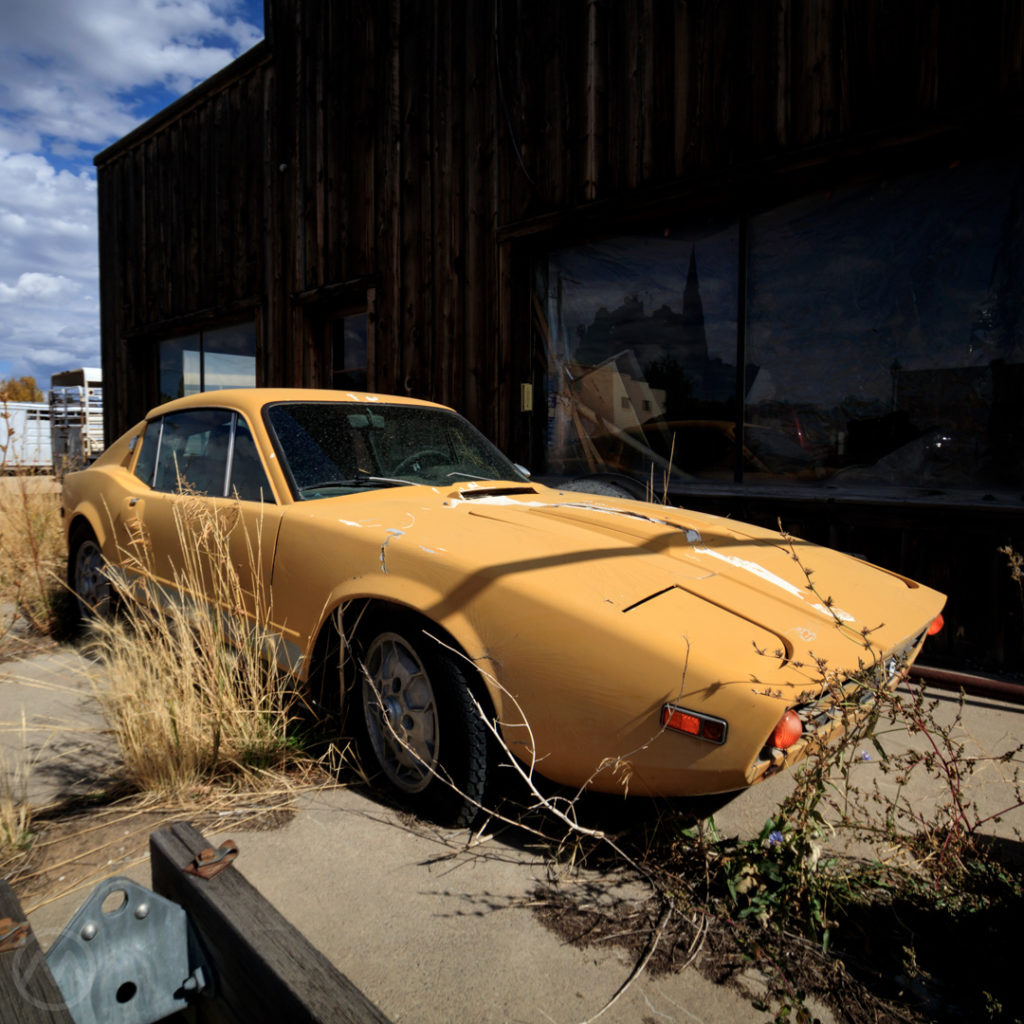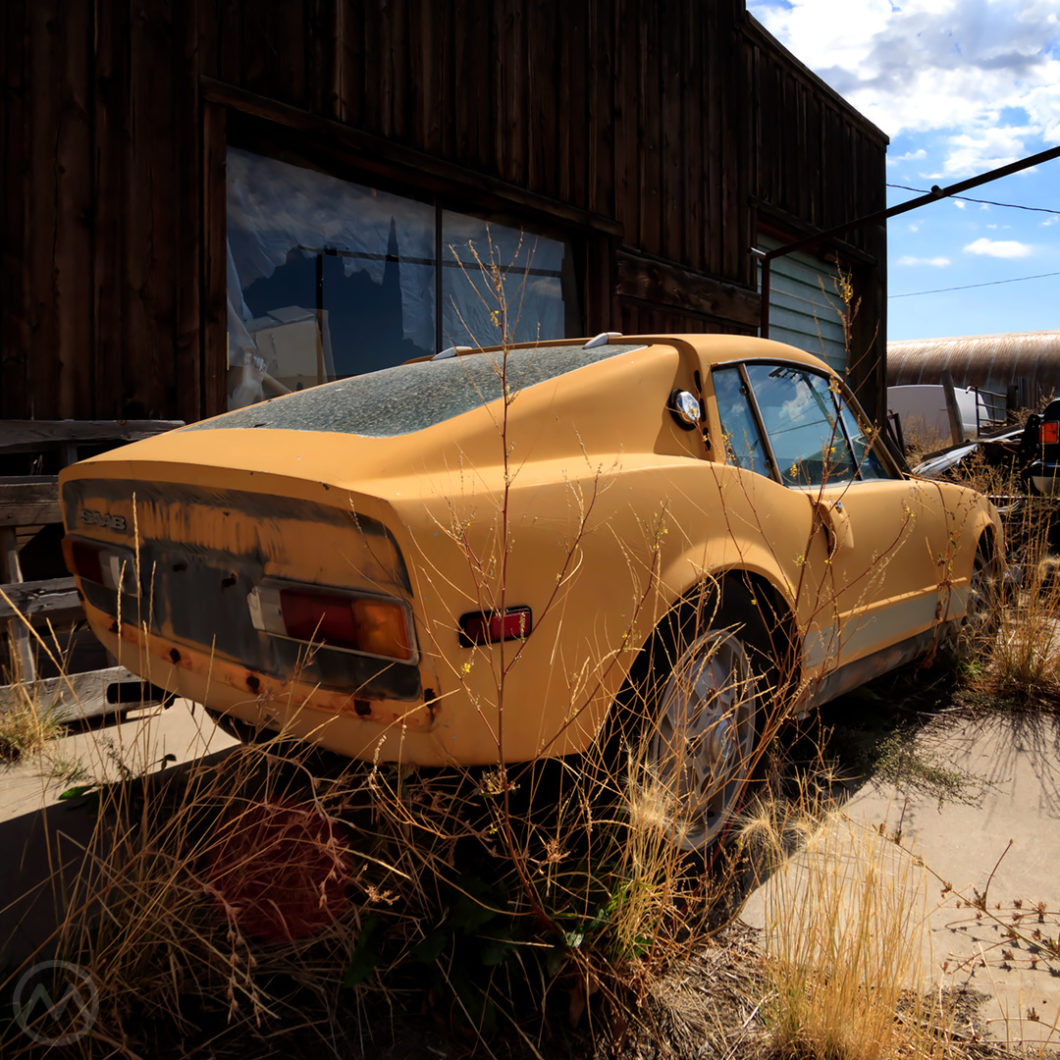There were four distinct Saab Sonetts over the years, although the last one – the one we’re talking about here – was labeled “Sonett III.”
The original Sonett, supposedly named for the phrase “Så nätt den är” (“How neat it is”), was an open barchetta created in a distinctly extracurricular manner in a Swedish Barn. Just six were made from 1955-57.
The later, far more production-oriented Sonetts did not arrive until 1966, and even then the first cars were built in very small volumes. But the story begins in the early 1960s with two developments on two sides of the Atlantic.
Just six years into carmaking, Saab launched its U.S. dealer network in 1956, and by 1959 the USA was the company’s biggest export market. They were the kind of dealers who specialized in foreign cars, and seeing how MGs and Triumphs were resistant to the ups-and-downs of economy cars, they wanted a sports car and asked for one.
They wanted one so much, in fact, that they displayed a prototype in 1962 created by American Walter Kern – an MIT engineer, the Quantum. This curvy 96-based roadster looked like might have been from the pen of Franco Scaglione, but Kern had designed it himself.
Even though Saab dealers wanted it built and the company said it might take up the idea, it ultimately didn’t happen (engineers in Sweden didn’t seem to like it).
Nevertheless, it affirmed that Saab wanted to make a sports car, which was something they were already trying to figure out how to do.
The MFI-13
Meanwhile, in Sweden, engineer Björn Karlström, who worked for a company called Nyman, was designing a family car of his own. Nyman wasn’t interested, so he took a revised version of his idea to Malmö Flyingindustri (MFI), which made small airplanes and fiberglass boat hulls, among other things. Instead of a family car, it’d be a sports car – they were higher profit just as the U.S. dealers knew.
MFI were keen to build his creation, which used many off-the-rack Saab parts and was originally meant to be mid-engined. The end result, the MFI-13, was front-engined and even more Saab-like, but MFI just didn’t have the resources or expertise to make a full-fledged production car.
Given how many Saab components were used, the MFI-13 prototype, built in steel so fiberglass molds could be made later on, was on Saab’s radar early on.
Saab, meanwhile, went back to the drawing board; having longtime Saab designer Sixten Sason create a rebodied 96 sports car called the “Catherina.” It looked less like Kern’s Alfa-esque car and more like a proto 240Z, but a little too tall for its lines.
Presented with both alternatives, Saab chose to take the MFI-13 in house and productionized it into the Sonett II, at first essentially built by hand.
To do that required significant re-engineering of the MFI-13, bringing it closer to the 96 in setup and adding rigidity. Saab also had a different constructor, ASJ, build the early cars.
Not too long after volume production came online, Saab replaced its two-stroke with Ford of Europe’s 1,498-cc V4. That necessitated even more big changes to the Sonett II – resulting in an ungainly front end with a giant hood bulge. The V4, after all, was much taller than the two-stroke.
Thus began the “third” Sonett – the Sonett V4. The V4 wasn’t a separate series, but it was basically a different iteration of the car.
The Sonett II and V4 were cracking drives and good competition cars (which Saab had intended all along) despite their unusual configuration. There certainly weren’t any other “sports cars” with front-drive, a column shifter, and a V4. Ironically, a column shift was one reason Saab engineers had rejected Kern’s “Quantum” prototype.
The Sonett II two-stroke was built in only small numbers – about 260 were made. The V4 was built in much larger numbers – about 1,600 between 1967 and 1969. That volume homologated for SCCA competition, where it did very well, but it still wasn’t enough to really make any kind of profit on the Sonett.
Sonett III
Saab wanted to build more of them and also put to rest the criticism over the visual oddness of the Sonett II. Design changes were necessary for federal compliance by 1970, so Saab modified the car into the Sonett III, with updated styling and safety and emissions equipment, and – finally – a floor shifter.

Although Saab had grown into a proper international company by 1969, it was still a tiny firm by any standard and given the volumes of Sonett II and V4 production, a full redesign of the car was not feasible from a budget standpoint.
Instead, the company hired Sergio Coggiola to restyle the car – giving it completely new and more harmonious front and rear treatments. Saab’s own designer Gunnar Sjögren did all the finishing work. The result, the “Sonett III,” looked much more like an Italian sports car – the lines were not dissimilar to the circa-1968 Lombardi Grand Prix, also sold as an Abarth, OTAS, and Giannini.
The car lost its forward-tilting, easy-access hood and tiny drop-down trunk in favor of a small conventional hood and a big glass hatch at the back. The body was much more aerodynamic than the Sonett II/V4, but also weighed more – although it was still a flyweight. Even when thick impact bumpers were added it still weighed less than 1,900 lbs.
The new styling certainly didn’t hurt in the showroom. The basic handling and performance characteristics remained, and the Sonett III remained a potent track weapon. The only caveat, as with the Sonett II/V4, was that tall people would find it a *very* confining office – it was not meant for anybody much about 6’1”.
With a more formalized production setup it was a little cheaper to build and also easily outpaced its predecessors in sales. More than 8,000 built up until the Opec crisis killed it off in 1974.
Virtually all of them were destined for the market that had clamored for a Saab sports car in the first place – the USA. In 1972, just about 250 Sonett IIIs were allocated for Sweden, most of the rest went to America.
Although 8,000 units made it vastly more popular than the Sonetts that had gone before, that was still not enough to keep building it and updating it forever. The Sonett ultimately wasn’t going to be redesigned to meet additional safety legislation, and production ended in mid-1974.

